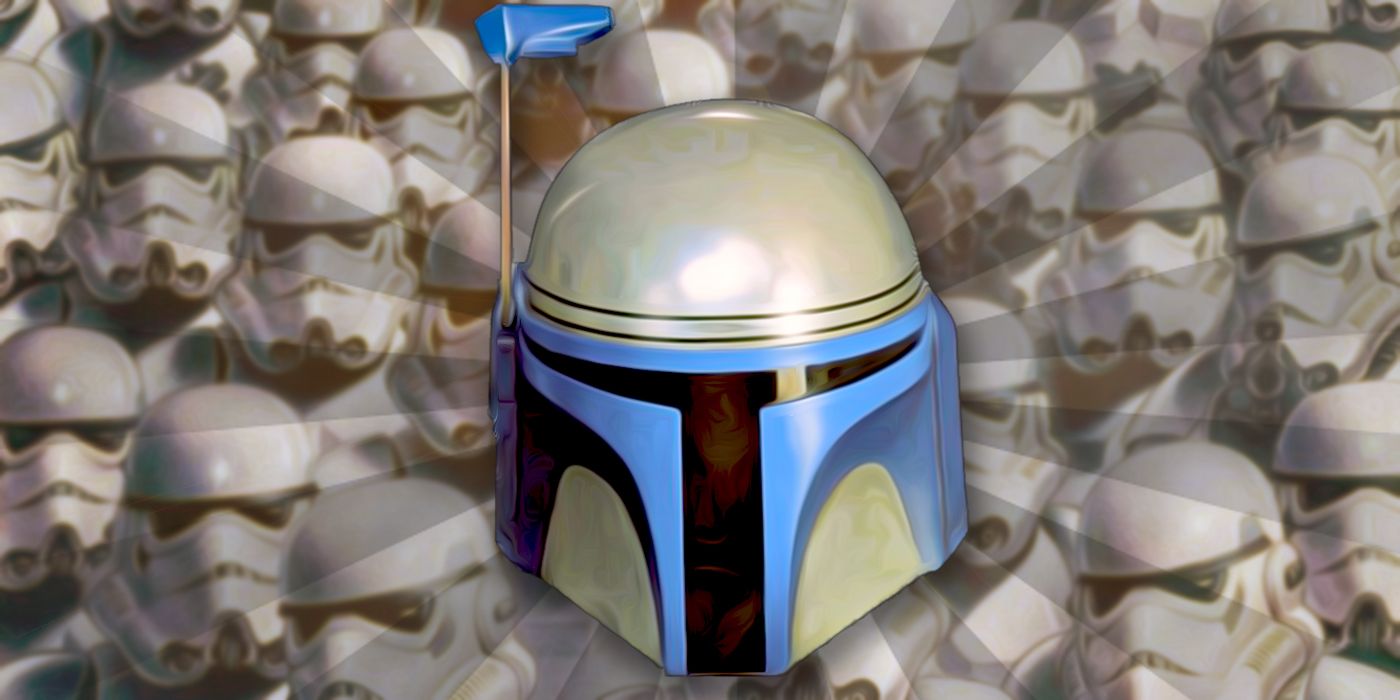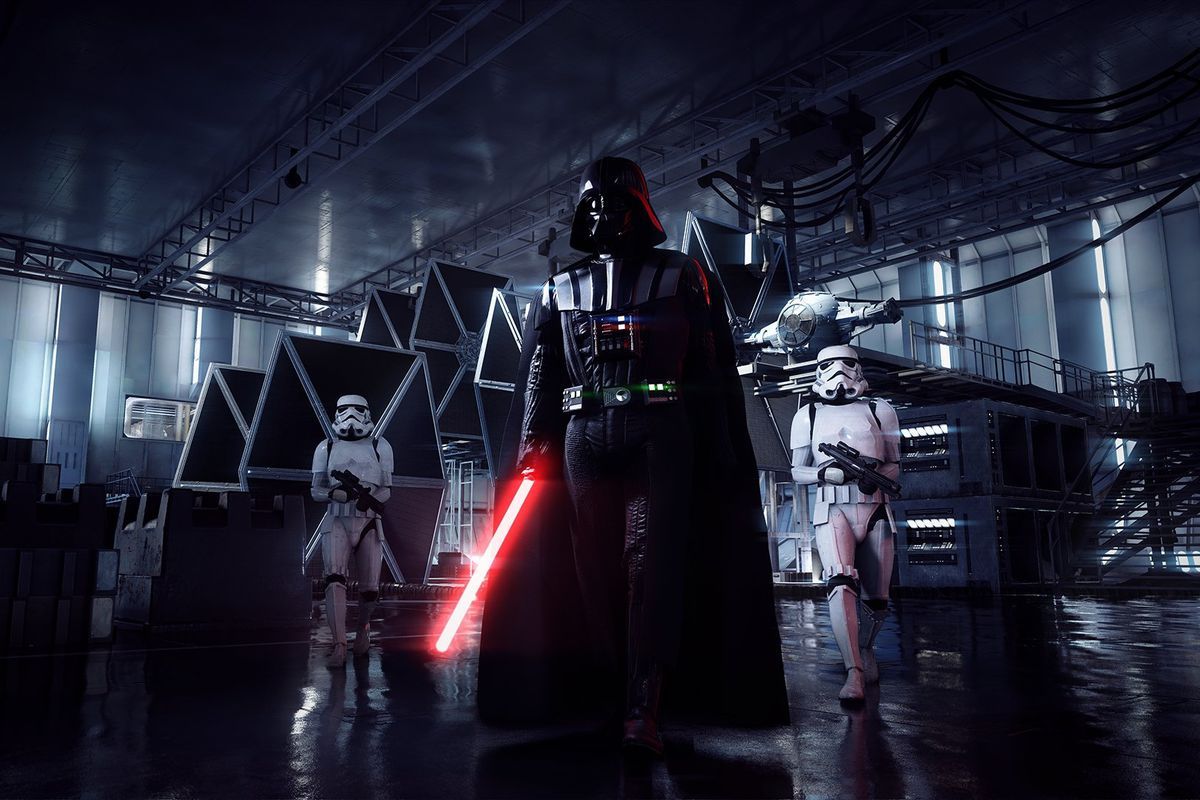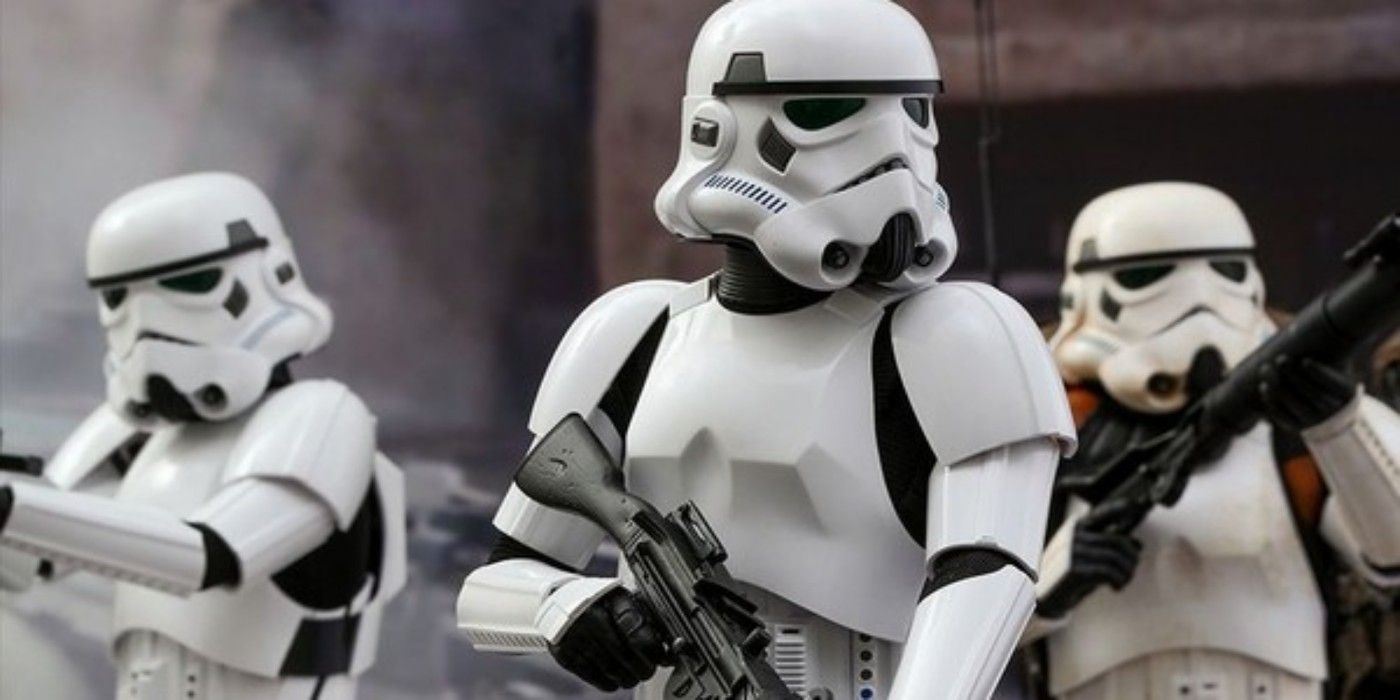
An iconic part of the Star Wars franchise has always been the Stormtroopers that form the bulk of the evil Empire's army. Aside from minor variations based on location or function, most Stormtroopers wear the same armor and helmets that give them a standardized look. While the original trilogy never peeked behind the mask, the prequels explained that the army originally consisted of clone troopers who looked as similar to one another as their helmets. But more recent canon backpedals on the clone explanation, and reveals that Stormtroopers are far more diverse than previously believed.
The most popular reveal betraying the expectation that all Stormtroopers were the same came in Force Awakens, when Finn unmasked for the first time. The genetic template for the clone army was Jango Fett, seen in the prequel films when the clone conspiracy originally came to light. Finn looked altogether different, however, and he explained his background later in the same film as essentially becoming a young recruit when the First Order orphaned him.
Since the sequels take place well after the fall of the Empire, the difference in recruitment could have been chalked up to the loss of the genetic template necessary for fueling the clone army. In order to find the explanation for why the First Order does not simply use clones, and for why the Empire itself did not exclusively use clones, Star Wars fans need to turn to the canon background provided by the oft-overlooked Star Wars: Battlefront II.

The video game details an event known as the "Kamino Uprising," wherein, after two decades faithfully producing clones for the Empire's army, a rebellious band of Kaminoans bred and raised their own clones to form a rebellion. In response, the Empire hired the young Boba Fett to infiltrate the facility and and lead the Empire's endeavor to quash the rebellion. Those familiar with Boba Fett's background know exactly why he was perfect for the job.
A clone of Jango Fett himself, Boba was different in that he was kept out of the artificial aging process that accelerated the growth of the clones. Instead, Jango raised Boba as his own son and trained him as his successor for the Galaxy's most-feared bounty hunter. Even more indifferent to galactic politics than his father, Boba had no problem leading the counter-rebellion in service of the Empire, as long as the pay suited him.
With Boba's assistance, the Kamino Uprising did not drag out past a single devastating battle, but the aftermath convinced Emperor Palpatine to shift strategies when it came to forming his army. While clones still proved useful, Palpatine opted for using different genetic templates. In a further effort to diversify the source of his army, Palpatine began the recruitment of birth-born soldiers. Although the Jango genetic template still saw use, diversifying the sources of the Stormtrooper Corps allowed Palpatine to further tighten his grip on the Galaxy by making rebellion within his own ranks all the harder to consolidate.
The lore is perhaps one of the most important contributions to Star Wars canon that Battlefront II made, but seldom receives much attention. The exposure of Star Wars fans to video games is considerably lower than it is to franchise-endorsed TV and movies, but even the game itself proved immensely controversial upon its debut. Concern over microtransactions, which heavily monetized the game-playing experience, haunted the game from its outset, and the efforts of its producer EA Games to ameliorate the issue proved ineffective.

Despite the controversy surrounding the game and the minimal exposure its story received, the Kamino Uprising proves to be an integral part of Star Wars history that deserves more attention in future projects. The animated series Star Wars: The Clone Wars did a remarkable job of fleshing out the lives, personalities and adventures of the Clone Army when they were still in the service of the Old Republic. Much of Finn's story in the films and comics helps explore the same angle from after the Empire's fall. The Kamino Uprising provides an important middle piece in the lore that tells the part of the faceless soldiers' stories.
With all of the upcoming Star Wars projects in the works, there are plenty of places to fit in details of the Kamino Uprising. While still mysterious, the Disney Plus series The Mandalorian seemingly focuses on the titular successor to Boba's title of the greatest bounty hunter in the Galaxy, and is rife with opportunity to explain what exactly happened to the clones that once proved the powerful military force behind the Empire's political machinations.
To explore the Uprising itself, Disney's other service-exclusive focusing on Obi-Wan Kenobi happens to take place around the same time the attempted rebellion occurred. After all, it was Obi-Wan who first uncovered Palpatine's plot to produce a clone army and it would be completely appropriate for his character to visit Kamino once more. Whether he would view his previous actions as a mistake or a missed opportunity, the rebellion could prove an interesting source of inner and outer conflict for the hermetical Jedi.
Add Comments